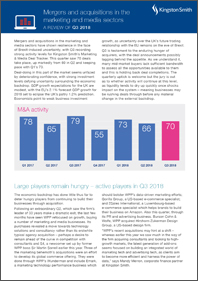BY Fraser Tennant
Growth across the UK tech sector in Q4 2018 expanded at its weakest pace for three years, as the impact of Brexit and accompanying uncertainty began to bite, according to a new report by KPMG.
According to KPMG’s UK Tech Monitor Index, the sector experienced a difficult end to 2018, as business activity growth eased and new work remained subdued, with global trade, in addition to Brexit-related uncertainty, contributing to a loss of momentum in the final quarter of 2018.
Furthermore, although the Index, which measures the strength of business activity across the sector, remained above the crucial 50.0 no-change value at 52.4 in Q4 2018, this was down from 54.0 in Q3 2018 to the slowest rate of tech sector business expansion since Q4 2015.
“Our report reveals that political uncertainty has dented client confidence contributing to a slowdown in growth at the end of last year,” said Bernard Brown, vice chair at KPMG UK. “But, buoyant staff hiring and capital expenditure plans are still in place for 2019.”
Indeed, despite the subdued end to 2018, the KPMG Index reports positive signs, with tech firms indicating that they remain “highly upbeat” about their capital expenditure plans, although projections for demand growth have “softened”.
The tech sector’s more upbeat attitude to business growth is in marked contrast to the rest of the UK economy, with many companies stockpiling and holding off on investment decisions.
In terms of the tech sector, KPMG notes that strong R&D spending continues to drive confidence regarding new product launches, with a weak pound providing a competitive boost that will help achieve new export sales.
“This confidence is reflected in the statistic that almost 50 percent of UK tech firms intend to add jobs over the next year, whilst many traditional manufacturers are considering moving jobs offshore,” added Mr Brown. “This demonstrates the strength and resilience of the UK tech sector in the new digital economy.”
News: Tech Sector Growth Weakest for Three Years as Uncertainty Begins to Bite




